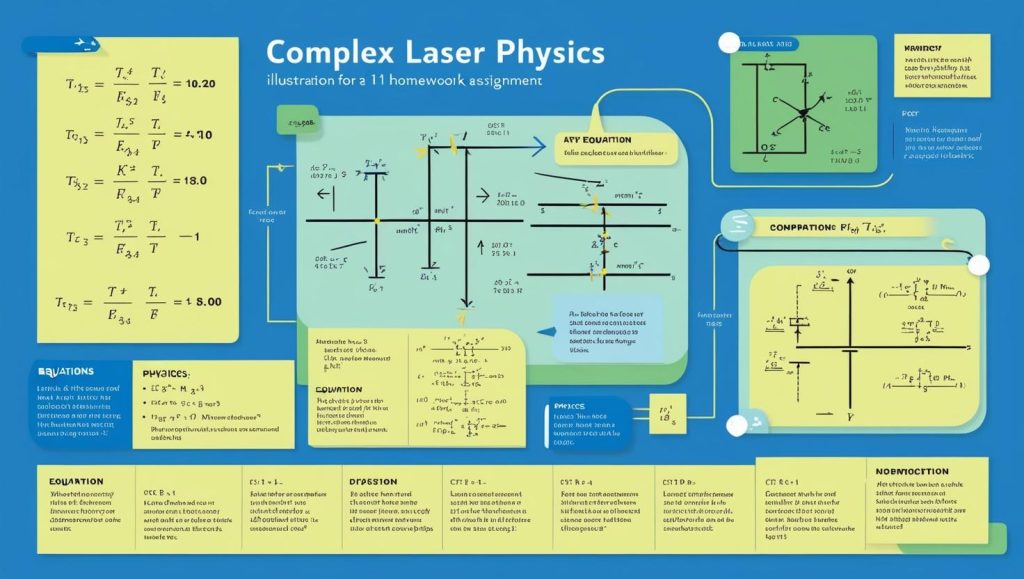Laser physics is a fascinating field that explores the principles of light amplification, stimulated emission, and the application of laser technology in various industries. Understanding laser physics requires knowledge of optics, quantum mechanics, and electromagnetic waves. This guide provides comprehensive Laser Physics Homework Help, covering fundamental concepts, equations, problem-solving techniques, and valuable online resources.

Understanding Laser Physics
Lasers (Light Amplification by Stimulated Emission of Radiation) are devices that emit coherent light through optical amplification. Key principles include:
- Stimulated Emission: The process by which an incoming photon causes an excited electron to drop to a lower energy state, emitting an identical photon.
- Population Inversion: A condition where more atoms are in an excited state than in a lower energy state, essential for laser operation.
- Optical Cavities: Structures that allow photons to bounce between mirrors, amplifying light.
- Coherent Light Emission: Laser light has a fixed phase relationship, resulting in a narrow and intense beam.
Tips for Solving Laser Physics Homework
1. Understand the Einstein Coefficients
Einstein proposed three processes involved in laser action:
- Spontaneous Emission: Emission of a photon without external influence.
- Stimulated Emission: Emission of a photon induced by another photon.
- Absorption: An electron absorbs a photon and moves to a higher energy level.
The rate equations for these processes are: where A and B are Einstein coefficients and ρ is the energy density of radiation.
For a deeper understanding, visit HyperPhysics.
2. Learn the Properties of Laser Light
Lasers differ from conventional light sources in three ways:
- Monochromaticity: Laser light consists of a single wavelength.
- Coherence: The emitted light waves have a constant phase relationship.
- Directionality: Laser beams travel in a straight, narrow path.
3. Explore Different Types of Lasers
There are several types of lasers, including:
- Gas Lasers (e.g., Helium-Neon laser)
- Solid-State Lasers (e.g., Ruby laser)
- Semiconductor Lasers (e.g., Diode lasers)
- Fiber Lasers (used in telecommunications)
4. Utilize Laser Physics Simulations
Simulations help visualize laser action and beam properties. Try PhET Interactive Simulations for engaging laser physics experiments.
Common Laser Physics Homework Problems
Problem 1: Calculating Laser Wavelength
The wavelength of a laser is given by: where h is Planck’s constant, c is the speed of light, and E is the energy difference between two states.
Problem 2: Determining Laser Output Power
The power of a laser beam is given by: where E is the energy of emitted photons and t is time.
Problem 3: Understanding Beam Divergence
Laser beam divergence angle is estimated as: where w₀ is the beam waist radius.
Best Online Resources for Laser Physics Homework Help
- MIT OpenCourseWare: Free laser physics lectures and coursework.
- Coursera: Online courses on laser physics and optics.
- SPIE: Research articles on laser technology.
Conclusion
Laser physics is an essential topic in modern science and technology, with applications in medicine, communications, and industry. By mastering fundamental concepts, equations, and utilizing online resources, students can excel in their homework assignments. For further Laser Physics Homework Help, explore the recommended resources in this guide.


